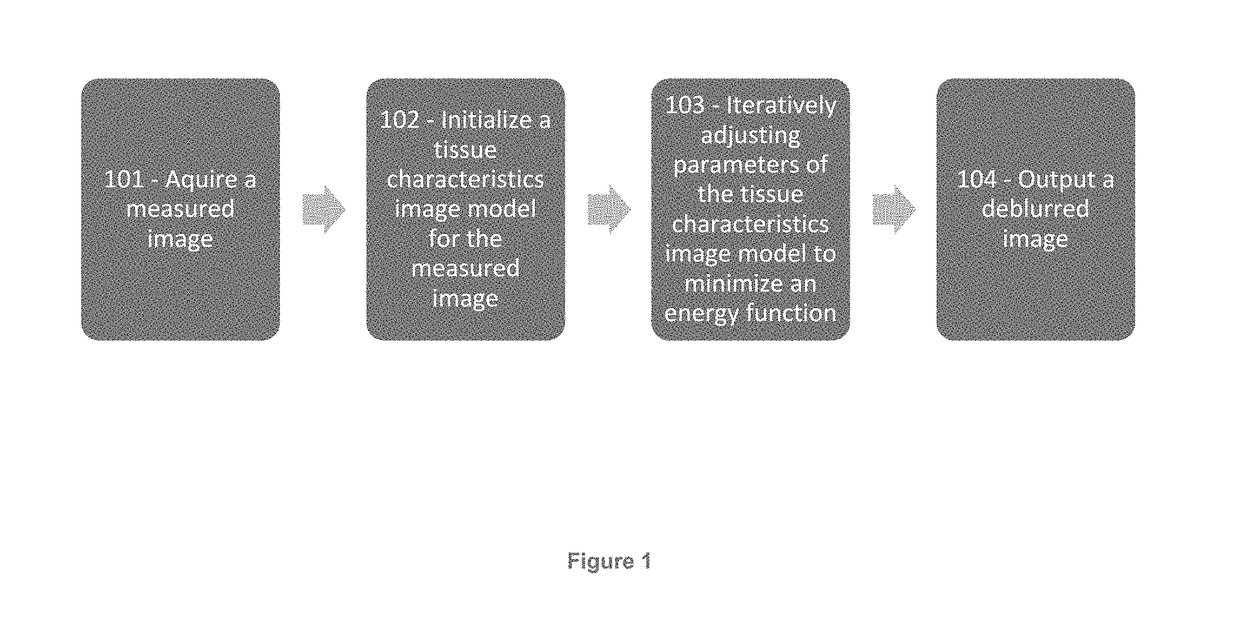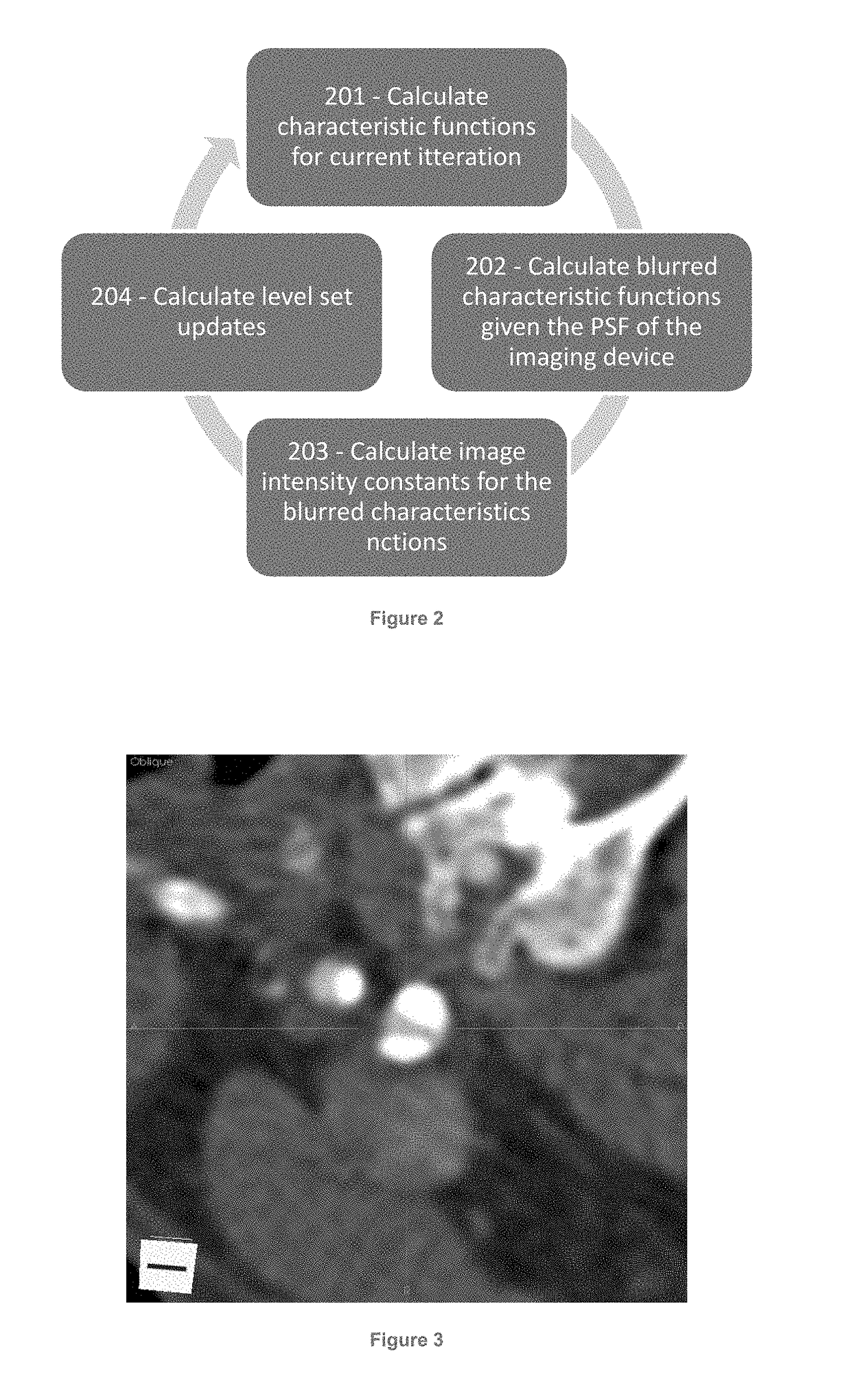Systems and methods for analyzing pathologies utilizing quantitative imaging
a quantitative imaging and pathology technology, applied in image analysis, image enhancement, instruments, etc., can solve the problems of 45% misclassification, surgery does not benefit patients, and 45% of patients are not able to perform surgery, so as to improve image analysis, reduce signal noise, and improve image accuracy
- Summary
- Abstract
- Description
- Claims
- Application Information
AI Technical Summary
Benefits of technology
Problems solved by technology
Method used
Image
Examples
Embodiment Construction
[0032]The present disclosure provides improved image interpretation capabilities which enable robust interpretation of medical images taking into account the non-idealities of the scanning process as well as a detailed knowledge of biological properties in combination. Example embodiments may relate to vascular analyte analysis of CT and / or MR images. Significant challenges to this analysis are 1) the analyte regions are extremely small, sometimes sub-voxel, 2) the scanner may have significant spatial blurring relative to the size of the analyte regions, and 3) the analyte regions are located very close to other high contrast edges (i.e., lumen-wall interface) whose blur (proportional to the contrast difference) may significantly change the intensity values. These conditions lead to blurring artifacts that are of an equal or greater image intensity magnitude than the analytes contrast with the surrounding tissue. These and other issues are addressed by way of the present disclosure....
PUM
 Login to View More
Login to View More Abstract
Description
Claims
Application Information
 Login to View More
Login to View More - R&D
- Intellectual Property
- Life Sciences
- Materials
- Tech Scout
- Unparalleled Data Quality
- Higher Quality Content
- 60% Fewer Hallucinations
Browse by: Latest US Patents, China's latest patents, Technical Efficacy Thesaurus, Application Domain, Technology Topic, Popular Technical Reports.
© 2025 PatSnap. All rights reserved.Legal|Privacy policy|Modern Slavery Act Transparency Statement|Sitemap|About US| Contact US: help@patsnap.com



